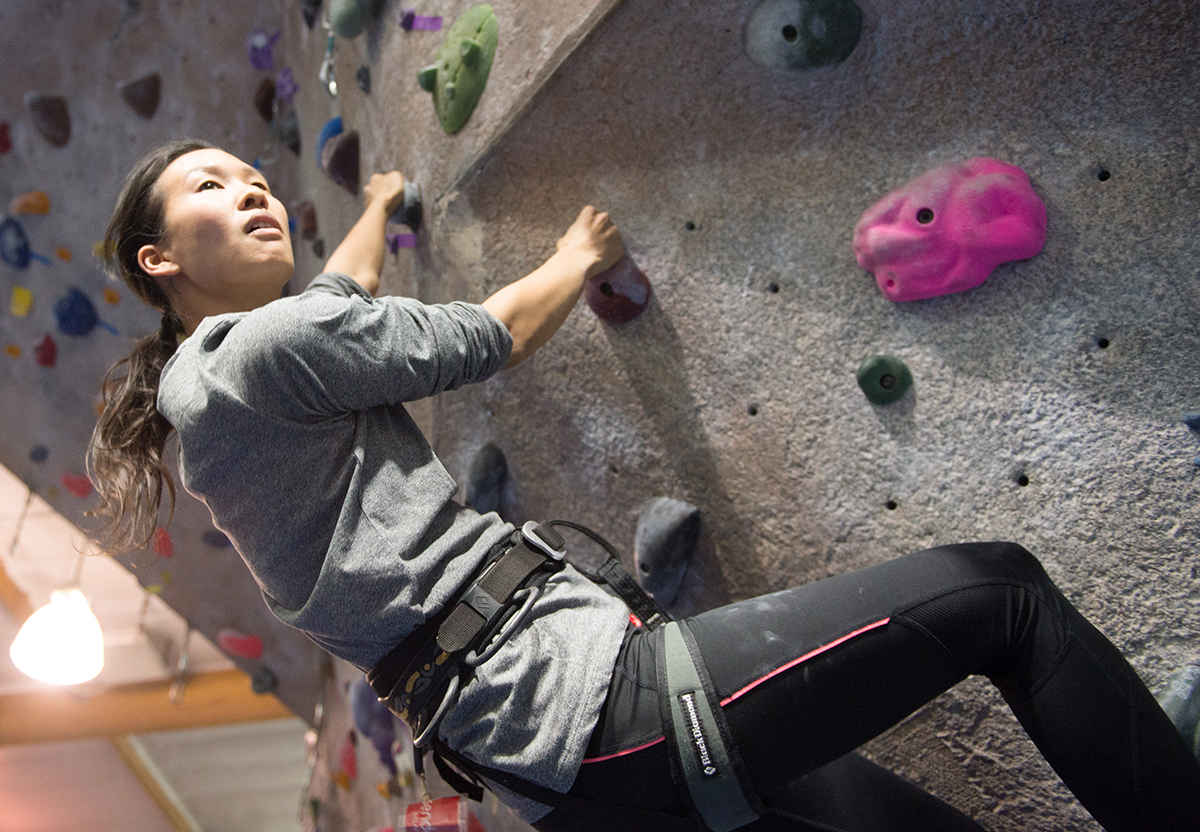UCLA alumna Sue Ann Pien dreams of a life on Mars

UCLA alumna Sue Ann Pien made it through the first round of candidates applying for a mission to settle on Mars.
By So Jung Ki
Feb. 6, 2014 1:45 a.m.
Sue Ann Pien parted her hair to reveal a map of the solar system tattooed on her scalp.
“Can you see it?”
Pien, who graduated from UCLA with a degree in international development studies in 2004 and dreams of one day going to space, may be among the first to glimpse a slice of space previously unexplored by humans.
From a pool of about 200,000 applicants, Pien was recently selected as one of more than 1,000 candidates for the Mars One project, which aims to establish a permanent settlement on the red planet in coming decades. Mars One will select 24 to 40 individuals from the pool of 1,000 candidates to man the organization’s private mission to Mars.
Mars One is a nonprofit and nongovernmental organization that plans to send four astronauts on a one-way interplanetary trip every two years beginning in 2024.
“Space makes me ponder about a lot of things. I want to know more,” Pien said.
Pien wanted to become an astronaut ever since she was a child.
“Sue Ann is someone who will always follow her dreams. No matter how crazy it seems, she will make it happen,” said Kim Tran, Pien’s best friend who graduated from UCLA in 2008.
Pien’s mother, who worked for a rocket engine company, opposed her aspirations of going to outer space after the 1986 Challenger shuttle disaster.
Nevertheless, Pien kept her faith and continued to explore space in her own ways, such as reading books and taking online classes.
Currently, Pien works full-time at an online educational company and has a side career in acting. But she said she hopes the Mars One mission will allow her to contribute to something that is greater than just her own life.
“I hope that (Mars One) changes our planetary consciousness in terms of how we interact with each other,” she said.
The orbits of Earth and Mars line up every two years and allow for a relatively time- and cost-efficient trip between the two planets, said UCLA planetary sciences professor David Paige.
The risks of the mission depend on the prospects of keeping the astronauts alive during the eight-month trip through space to reach the planet’s surface and during their inhabitation of Mars.
No country has sent humans to Mars. So far, NASA’s Apollo Program conducted between 1963 and 1972 has only succeeded in landing humans on the Moon.
To accommodate the harsh conditions on the planet, the first colony plans to have life support systems that will convert the ice in the Martian soil to water and oxygen. The organization estimated it would cost about $6 billion to send the first four settlers to Mars, according to the organization’s website.
“Mars is very inhospitable. There aren’t a lot of resources that you can use directly,” Paige said.
A decade away from launch, many barriers still face the privately funded Mars colony.
Paige said it will be difficult for the Mars One mission to secure enough funding to make the voyage and meet the deadline for the first launch.
Paige added that the project will sound much more feasible once it demonstrates its capability to send anything to Mars.
“Right now, only governments have been able to get to Mars, if at all,” Paige said. “We’re not even to the point where it’s possible to send people into just the orbit around the Earth commercially.”
Even with questions surrounding the feasibility of the mission, Pien has begun preparations.
Pien trains in rock climbing to prepare for the medical and physical requirements in the candidates’ next round.
Pien said she anticipates one of the most difficult challenges that would face the first settlers on Mars would be their separation from Earth.
“It’s about how I get along with my teammates because we’re going to live the rest of our lives together basically,” she said.
The final candidates will be trained for eight years before the mission. The finalists’ occupations will not matter if they demonstrate their passion and motivation for this mission, Pien said.
Pien also points to her adventurous lifestyle as one well-suited to the Mars One mission. She said she has a great deal of travel experience, ranging from crossing China by train for three nights to traveling a seven-day horse track near Tibet.
Pien said she is interested in being part of a colony on a new planet partly because she advocates for the idea of a resource-based economy that was proposed by the social engineer and futurist Jacque Fresco.
“People suffer not because we don’t have enough, but because we have more than enough,” said Pien. “We have the degradation of the environment because people honor the value of money more than they value what is real in terms of our resources.”
In fact, the initial stages of the Mars colony will operate on a self-sufficient system. Mars One stated that the settlers will grow their own food inside the habitats and produce their own oxygen and water from Martian soil.
Round two of the selection process for the mission also includes an interview with the judges of the Mars One selection committee. Pien plans to visit the Mars Desert Research Station in Utah this summer to explore the virtual conditions on Mars.

